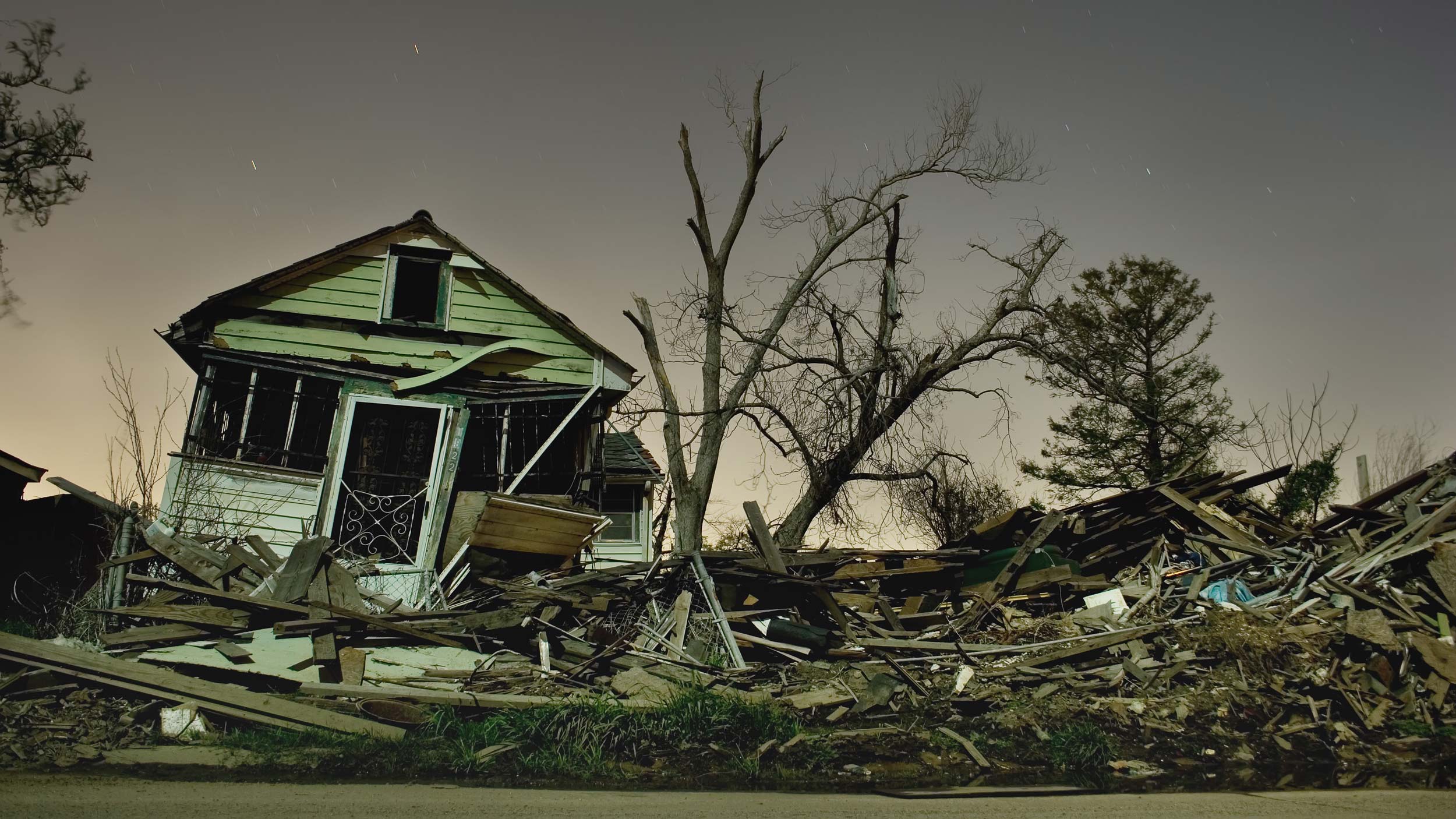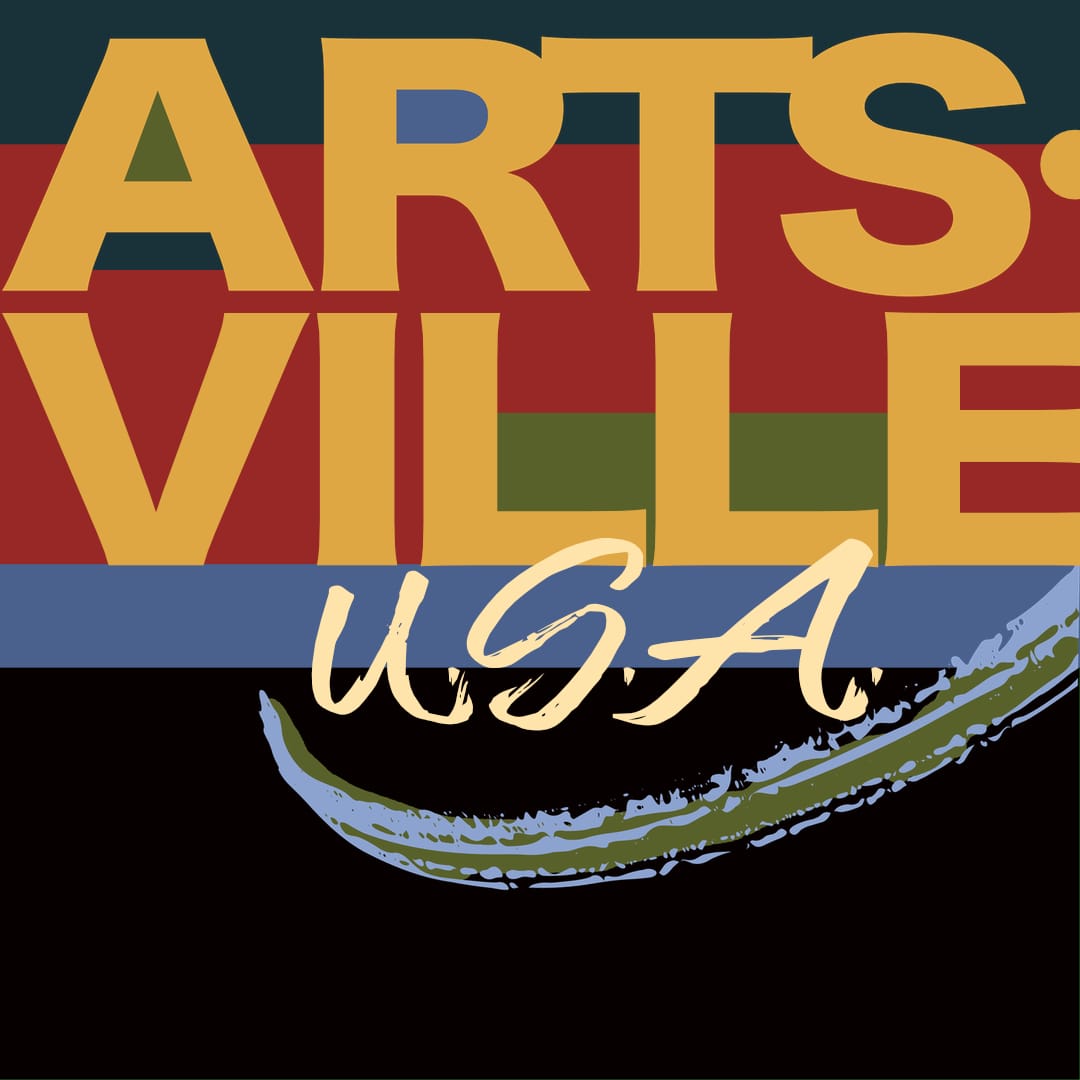‘A Tale of Two Cities’ Exhibition Unites Asheville and New Orleans on the Anniversaries of Hurricanes Katrina and Helene
'A Tale of Two Cities' commemorates the shared experiences of New Orleans and Asheville as they navigate the aftermath of climate-related disasters decades apart.

Even after 20 years, the ghost of Hurricane Katrina still haunts New Orleans. Now, the memory of another brutal storm looms over Asheville, North Carolina, as local artists prepare for the first anniversary of Hurricane Helene with events leading up to the Sept. 27 milestone. As anticipation grows, a specially curated collection of artwork is set to depart from Asheville on a 650-mile journey southwest, where it will join an exhibition at the New Orleans Academy of Art (NOAFA) observing the anniversaries of both hurricanes.
Opening on September 13, 2025—a date strategically positioned between the 20th anniversary of Hurricane Katrina and the first anniversary of Helene—A Tale of Two Cities commemorates the shared experiences of residents in New Orleans, Asheville, and Western North Carolina as they navigate the aftermath of climate-related disasters decades apart. Coinciding with the exhibition’s opening, Asheville will host RAD Resilience, a community-wide art event designed to support artists displaced by Helene. A Tale of Two Cities concludes on November 8, 2025, coinciding with the second annual RADfest.
“There is shared trauma between our cities,” says Andrew Rodgers, executive director of NOAFA and one of the show’s four curators. “It’s a terrible way to connect with another community, but [New Orleans has] lived through these experiences, so we understand how hard it is to come back. Particularly for an arts community that is already vulnerable on multiple levels. This exhibition was a small way the Academy could help Asheville in its journey of healing.”
Placemaking: The Myths, Memories, and Relics of a City

For native New Orleanians like Jan Gilbert, another curator and a contributing artist to the exhibition, the path to recovery continues to unfold two decades after Katrina made historic landfall in late August 2005. As a co-founder of the VESTIGES Project, a loose-knit artist collective established in 1984 and united by a shared sense of place, Jan has spent the last forty years creating interdisciplinary work exploring the myths, memories, and relics of New Orleans. When disaster struck, she and the other VESTIGES artists formed the VESTIGES Think Tank, an offshoot of the original project focused on revitalizing the cultural landscape of New Orleans in the aftermath of Katrina.
“The concept of network and collaboration, along with the significance of ritual and place, were really the essential tools and instigators for our projects,” says Jan, reflecting on the VESTIGES Project’s involvement in post-Hurricane Katrina rebuilding efforts. “Having engaged in various interdisciplinary initiatives and traveled to different areas, we aimed to build a network while recognizing that this is a widespread issue. Many people assisted us, particularly in New Orleans, but we all understood that recovery takes a long time and continues to this day.”
Those recovery efforts found an outlet in Jan and fellow New Orleanian artist Babette Beaullieu’s “Louisiana Prayer Flags,” a meditative installation created during the 2012 hurricane season. Now included in A Tale of Two Cities, the “Louisiana Prayer Flags” invites viewers to participate in a communal act of hope, merging traditions from Tibetan, Japanese, and Cajun cultures. Each personal wish and prayer transforms the installation into a living tapestry of shared hopes and dreams for the future of New Orleans.
No More Climate Havens

Hope for the future is just beginning to take root in Asheville, another Southern cultural hub recently ravaged by a devastating and unexpected environmental disaster. Long hailed as a climate haven—shielded from coastal wildfires, sea level rise, and hurricanes—Asheville was blindsided last year when a violent torrent of rain and wind swept up from the Gulf Coast and into the mountains.
According to the World Weather Attribution, human-caused climate change made Hurricane Helene stronger, wetter, and weirder. As global temperatures continue to rise, researchers predict the U.S can expect to see more storms like Helene in the future. “We can’t pretend this isn’t happening,” says Andrew Rodgers, reflecting on a central theme of A Tale of Two Cities. “It's happening in New Orleans, it's happening in the mountains. As artists, as the tip of the cultural spear, our job is to present these ideas to the community and let them respond.”
For artist Kenn Kotara, a former New Orleanian now living in Asheville, A Tale of Two Cities is an opportunity to build and strengthen those communities affected by climate disasters. Both a curator and a contributing artist in the exhibition, Kenn feels he is “moving from just the loner artist in the studio to more community-minded, because it's so needed. Whether it's a meteorological event, a political event, or an economic one, how do we pull our resources together instead of remaining these lone wolves?”
His contribution to the exhibition, a kaleidoscopic painting titled “overtopping,” depicts a breached levee, with white water cascading across a gridded city and ultimately reaching a white obelisk on the horizon.
Outside the City: Western North Carolina

Like Kenn, many exhibiting artists are residents of Buncombe County, which became the focal point of attention in the immediate aftermath of Helene. Floodwaters from the French Broad and Swannanoa rivers had turned Asheville’s River Arts District and Biltmore Village into an apocalyptic wasteland dotted with soggy artwork and crumbling infrastructure; meanwhile, nearby towns like Black Mountain and Swannanoa were nearly wiped off the map by over a foot of rainfall within two days.
While national media coverage centered on Asheville and the near-destruction of the River Arts District, the sparsely populated communities scattered throughout the surrounding Blue Ridge subrange didn’t fare much better. The region’s mountainous terrain, washed-out roads, and innumerable fallen trees made rescue efforts particularly difficult in remote areas like Spruce Pine and Bat Cave, where traces of the storm still linger. As Louise Glickman, ArtsvilleUSA founder, points out, “The media tends to look for the next shiny disaster. Without enough vim and vigor to tell these stories, the arts become rather secondary, especially in rural areas outside Asheville.”
According to the U.S. Census Bureau, 10 of the 27 counties in North Carolina under a major disaster declaration for Hurricane Helene are “predominantly rural.” Ensuring these rural areas and their artists remain in the spotlight, the Blue Ridge National Heritage Area (BRNHA)—a regional nonprofit dedicated to preserving the natural and cultural heritage of 25 counties in Western North Carolina—has played a key role in the narrative underpinning A Tale of Two Cities.
For the exhibition, BRNHA has selected a range of handmade crafts that reflect the history and cultural heritage found along the Blue Ridge Craft Trails, an extensive guide that stretches from the rural westernmost corner of the state, eastward to the foothills of the Blue Ridge Mountains, and northward into the region's high country. “The storm came right through the heart of the region,” says Angie Chandler, executive director of BRNHA. “We have a long way to go, but despite that, I believe that arts and culture can be very healing. The people of Western North Carolina are extremely resilient and persevering.”
The Road to (Economic) Recovery

Hurricane Helene’s impact on Western North Carolina extends far beyond just infrastructure. The region’s numerous artists and arts organizations rely on tourist dollars to sustain them through the ordinarily bustling fall and holiday seasons; some artists make roughly 50 percent of their annual income in the last quarter of the year.
As a hub for craft artists, the region attracts countless visitors annually, eager to explore its gallery scene, browse local craft fairs, and attend lavish destination weddings. Visitors spent $2.1 billion during the fourth quarter of 2023, according to Marlise Taylor, director of tourism research at Visit NC, the state’s tourism board. “If no visitor spending occurred in the mountains for the whole quarter, that’s what we estimate the loss would be after Helene,” Marlise told the Carolina Public Press.
Similarly, New Orleans, renowned for its art, music, and cuisine, faced a steep decline in tourism following Hurricane Katrina, putting immense pressure on its creative communities. Two decades on, the city has seen a renaissance. Recovery efforts not only revitalized the French Quarter but also sparked a broader cultural revival across the entire region. Thanks to the vision and commitment of both residents and officials, cultural tourism is thriving once again in the Big Easy.
Twenty years ago, there was no blueprint for recovering from a disaster of this magnitude. Today, the city's incredible turnaround stands as a beacon for other cultural hubs struggling with shattered economies caused by climate disasters, including Asheville and Western North Carolina.
As the anniversaries of Helene and Katina approach, curator Jan Gilbert emphasizes the necessity of collaborative projects like A Tale of Two Cities for the spiritual, physical, and economic growth of both cities. “We hope to inspire and forge relationships across the board through art and culture that will endure and aid these two cities and other future community needs,” she says, describing the exhibition as a dialogue between two cities, each navigating similar tragedies in different stages of grief.
“We do bounce between the sad, terrifying, and the uniting, the fortifying, the humanitarian, and the inspirational,” she continues. “What's been driving me a lot lately is Gerhard Richter's quote, ‘Art is the highest form of hope.’"
Addendum: Details and Participating Artists

A Tale of Two Cities runs Sept. 13 through November 8, 2025, at the New Orleans Academy of Fine Arts. An Asheville-exclusive leg of the exhibition is scheduled to open on September 1 at the Ferguson Family YMCA in Candler, North Carolina. The opening reception occurs on Sept. 13 at 8 p.m.
The exhibition’s Speaker Series will take place at NOAFA on September 12 from 5 to 7 p.m., featuring Asheville artists Kenn Kotara and Jeffrey Burroughs. The September 13 event will run from 4 p.m. to 5:30 p.m., with discussions led by New Orleans artists Phil Sandusky, Tina Freeman, Steven Bingler, and Rontherin Ratliff. Both events are free and open to the public, with light refreshments provided on September 12. The series will precede the exhibition's opening night on September 13, which is also free to attend.
The exhibition is curated by New Orleans artist Jan Gilbert, New Orleans Academy of Art Executive Director Andrew J. Rodgers, Asheville-based artist Kenn Kotara, and Executive Director of The RADA Foundation, Kim Self Hundertmark. It is presented with support from Asheville’s River Arts District Artists (RADA) President Jeffrey Burroughs, the RADA Foundation, ArtsvilleUSA, and the Blue Ridge National Heritage Area. Participating Asheville-based artists will receive 100 percent of the proceeds from their sold work.
Exhibiting artists from New Orleans include Luis Cruz Azaceta, Babette Beaullieu, Keith Calhoun, Tina Freeman, Jan Gilbert, Jeremy Jernegan, Chandra McCormick, Jana Napoli, Sibylle Peretti, Rontherin Ratliff, Frank Relle, and Phil Sandusky.
Exhibiting artists from Asheville include Rob Amberg, Tami Beldue, Galen Frost Bernard, Jeffrey Burroughs, Cassie Butcher, Elizabeth Carrington, Alison Chism, Ashley Graber, Danielle Hughes, Jesse Jason, Chris Jehly, Kenn Kotara, Nava Lubelski, Melanie Maranda, Jim McDowell, Joseph Pearson, Amy Putansu, Peter Roux, Julie Slattery, Hayden Wilson, and Laura Woods.
Exhibiting artists from the Blue Ridge National Heritage Area and Craft Trails include Bandana Pottery, Pam Brewer, the Crossnore Weavers, Rachel David, John Geci, Bob Kogut, Rodney Leftwich, Mike McKinney, William Rogers, Desmond Suarez, and Mary Thompson.
This feature has been edited for length and clarity. All images published with permission of the artist(s); featured photo: ‘Clouet’ by Frank Relle.
